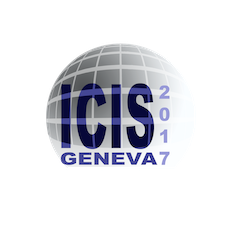Speaker
Description
Nowadays one of widespread types of ion sources is systems with plasma heating by microwave radiation in a magnetic field under conditions of the electron cyclotron resonance (ECR). In a purpose to obtain high values of ion beam currents there is a need of high plasma density. Due to this fact one of the main directions of ECR ion sources development is to increase the frequency and power of microwave heating.
In modern ECR ion sources gyrotrons are increasingly used as a source of microwave radiation. Earlier at the Institute of Applied Physics it has been demonstrated that the use of gyrotron radiation for plasma heating in simple mirror magnetic traps allows to produce beams of light or multiply charged ions with record current.
However, the disadvantage of such systems is that they are favorable for development of magneto-hydrodynamic (MHD) instabilities, and because of that there is a need to suppress them. Due to this fact there ion source design could be complicated resulting in technological difficulties and high manufacturing costs. According to that it was proposed to explore the prospects of creating a source of hydrogen ions on the basis of ECR discharge in a single solenoid sustained by powerful gyrotron radiation. Opposed to simple mirror trap this system is MHD stable and high power of microwave radiation allows to maintain an electron temperature on a sufficient level for high ionization efficiency of light gas.
So there was proposed to explore the prospects of creating a source of hydrogen ions on the basis of ECR discharge in a single solenoid sustained by powerful gyrotron radiation. Opposed to simple mirror trap this system is MHD stable, and high power of microwave radiation allows to maintain an electron temperature on a sufficient level for high ionization efficiency of light gas.
The paper presents the first results of gas ECR breakdown studies under such conditions and analysis of the prospects for the use of such plasma for ion beam production.
